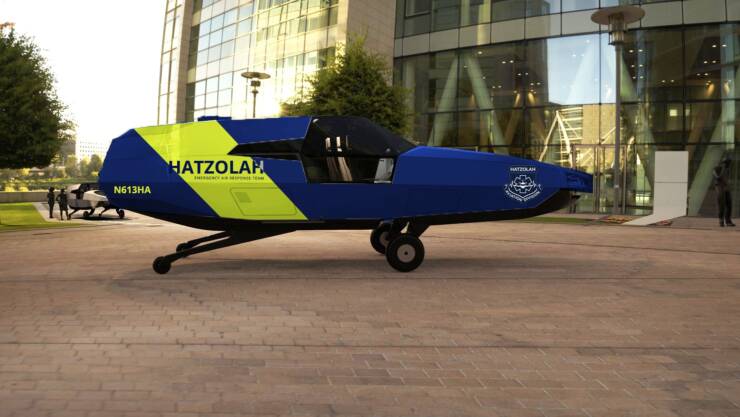
Tel Aviv. Israeli company that is developing CityHawk fan craft air mobility system plans to have three production conforming prototypes within two years.
The CityHawk is based on the company’s Cormorant designed for military missions.
In an exclusive interview, Nimrod Golan, CEO of Metro Skyways, the company that is developing the very unique platform, revealed that currently the main efforts are to create strategic partnerships with companies relevant to the program and to raise US$50 million investment.
“In parallel, we are talking with companies that are designing the verti ports that will serve platforms like CityHawk. We need to understand the ecosystem in which such platforms will operate in commercially.”
To be able to design an operational platform we need to fully understand the urban air mobility ecosystem.” Golan said.
He further explained that the experience accumulated by the sister company Tactical Robotics that is developing the Cormorant military and homeland security fan craft VTOL UAV, is helping in the design of the CityHawk.
According to the company. CityHawk, being the dimensions of a delivery van and having no exposed rotors, is designed to be “road legal.” It is the only multiple passenger, “Urban Air Mobility” VTOL that has true “fly anywhere, land anywhere” capability.
According to Metro Skyways, while CityHawk will initially be powered by jet fuel in order to expedite the airframe’s certification under FAA FAR 27, following certification it will convert to 700 bar compressed hydrogen propulsion.
According to the company, even with its new, hydrogen/ Fuel Cell Stack (FCS) powertrain, Metro Skyways has developed technology which will still meet all FAA/EASA requirements for a Category A takeoff, manned, rotorcraft certified for commercial operation.
CityHawk incorporates a powertrain based on two separate FCS units. Should one of the FCS units fail, the aircraft will be able to come down to a safe landing using power from the remaining FCS, with supplemental power available via on-board batteries contained in two Power Conditioning Units (PCUs).
Only in very rare cases would an installed rocket-deployed parachute be required.
If it is ever deployed, it will be fully steerable from the cockpit to avoid damage to people or property on the ground. To provide extra safety to the occupants in the event of a hard landing or crash, special provisions are being implemented in the design that meet the existing requirements for a jet fuel / turbine powered variant, even while carrying hydrogen on board.
CityHawk capitalizes on internal rotor Fancraft technology developed by Urban Aeronautics over two decades. Besides the unprecedented, compact footprint, the internal rotors, combined with multi-bladed, slow turning fans, enable extra quiet operation.
The company says that CityHawk’s minimal noise will blend into the city background noise at a distance of 250 meters.
Apart from the addition of a second engine (or FCS in the case of the H2 variant), CityHawk is identical in configuration, size and weight class to the Multi-Role, Cormorant UAV developed by sister company Tactical Robotics Ltd., which has accumulated in excess of 300 flights.
Cormorant is powered by a single 985 Horsepower turboshaft engine supplied by SAFRAN HE, the company’s design partner for its propulsion system.
-The writer is an Israel-based freelance journalist








